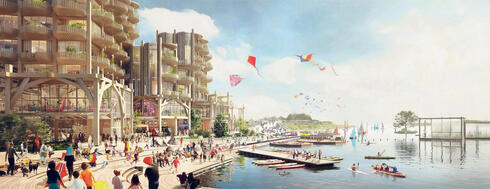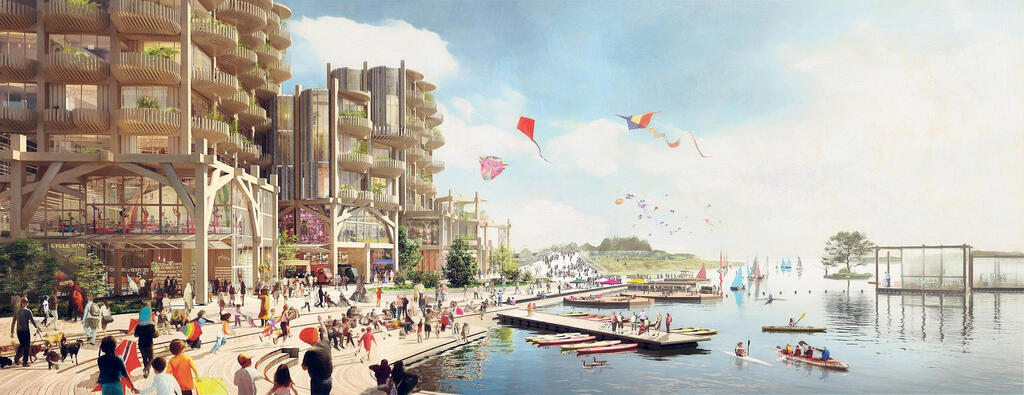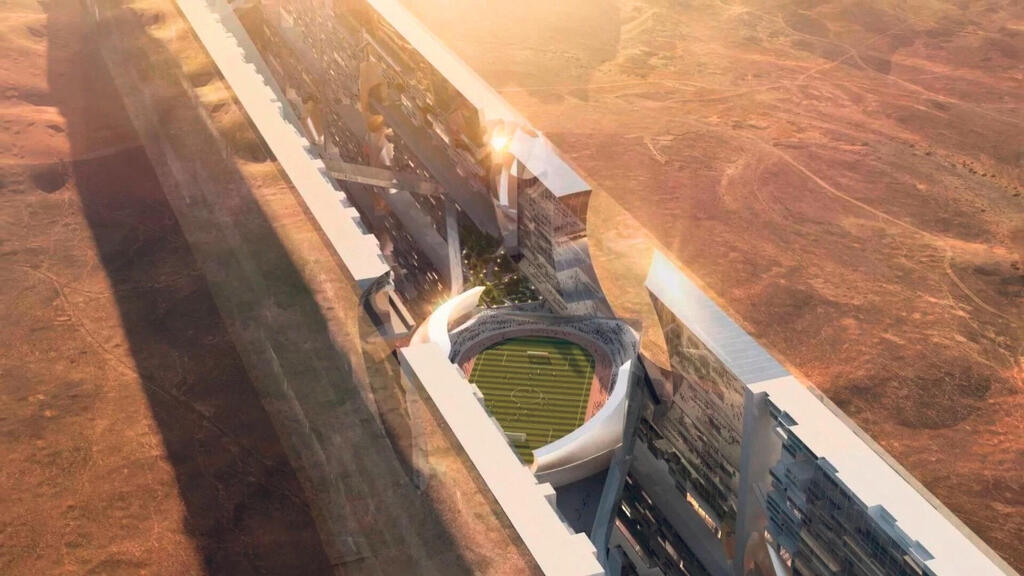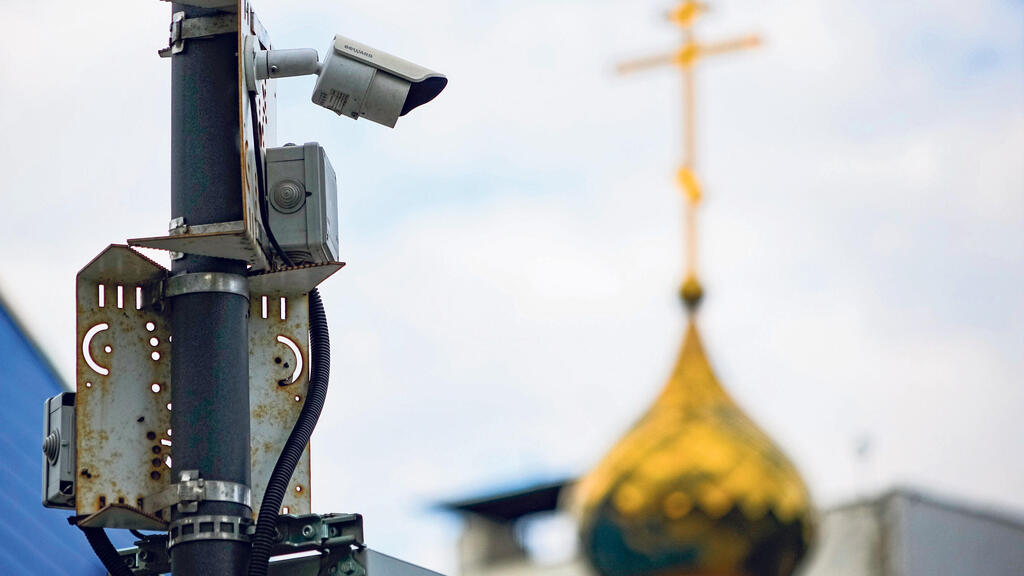
Tech utopia or corporate overreach? The story behind the demise of Sidewalk Labs in Toronto
Sidewalk Labs promised to build the city of the future, but public mistrust and fears of surveillance capitalism brought it down. Quayside 2.0 rises in its place, shifting the focus from technological control to sustainable urban living.
In December 2021, it all came to an end. Sidewalk Labs, the urban planning company, closed its ambitious smart city project in Toronto. The CEO left, and the company, which operated as a subsidiary of Alphabet, was absorbed back into its parent company. The Quayside project, which had been the subject of countless articles and was seen as a prototype for future cities, simply faded away. The tech giant would not plan, build, or operate a city from the ground up. There would be no wooden buildings covered with solar panels, no modular architecture for quick repurposing, no heated sidewalks to melt the snow, and no autonomous taxi system replacing streets. There would be no innovative canal system where industrial robots would empty trash and deliver mail, nor any climate management system to keep residents warm in winter and cool in summer.
Had it succeeded, Sidewalk Labs' project to build a neighborhood "from the internet upwards" might have established a new urban development model for cities worldwide, proving that a city full of sensors and cameras, as seen in China, could also thrive in a democratic society. With more than 68% of the world’s population projected to live in cities by 2050, one might have expected the collapse of a project that created such a buzz around “smart cities” to garner significant attention. Yet, its demise was met with relative silence. Did smart cities just die, and if so, why? Did the surveillance and monitoring systems at their core seamlessly integrate into urban life without us noticing, or did something else entirely happen?
3 View gallery


Simulation of the Quayside project in Toronto
(Illustration: Shutterstock/ Choi Yurim)
The city as an arena of surveillance
The term “smart city” was originally coined by IBM to represent the idea that technology could massively improve the way cities function and the quality of life for residents. Today, the term encompasses the adoption of computing and data management systems to optimize aspects of urban operation, including traffic control, resource management, and public services. The smart city was envisioned as a modern urban environment where technological advancements create deep connections between all the components of the city to improve life for both the public and individuals. All aspects of this ideal city—citizens, economy, government, mobility, environment, and daily life—would be "smart."
However, the push to "disrupt" urban living is not always the primary motivator behind smart city projects. It’s no surprise that such initiatives still thrive in monarchies and authoritarian regimes, despite the fierce public criticism that Quayside encountered. One of the most famous projects still on the agenda is Saudi Arabia's "The Line"—a smart city designed for 9 million people, stretching 170 kilometers in length and several hundred meters in width, with a glass ceiling. When Saudi Crown Prince Mohammed bin Salman announced the project in January 2021, it was marketed with vague terms like "cognitive city" and "civilizational revolution," where all services would be provided by artificial intelligence. Originally slated for completion by 2030, the project has since run into funding issues, and in April it was reported that its scale would be significantly reduced. For now, the Crown Prince denies this.
In authoritarian regimes, smart cities are not designed as efficient, futuristic, multicultural hubs—utopian models where technology enhances everyone’s life in public spaces tailored to residents' needs. Instead, they are crafted as arenas for data extraction. Citizens are no longer asked what they want; they are monitored to understand what they do, and perhaps eventually, to predict what they will want.
The line between marketing smart cities as tools for enhancing public safety and their use for surveillance and policing is particularly thin. Residents of Moscow discovered this when Russian President Vladimir Putin made the city “smart” in recent years. Under a project dubbed the "safe city," Moscow was wired with approximately 217,000 cameras, all connected to a control system called Sfera. The data from these cameras was combined with information from around 170 additional systems, including public services, transportation, and infrastructure. Among the collected data were license plate numbers, personal location data, and voice recognition. Although the project was ostensibly meant to increase safety and help catch criminals, it has been used by the regime to track protesters, journalists, and political dissidents—transforming a tool for public safety into one of repression.
The vision: sensing everywhere
What Russians accept out of necessity is not as easily accepted by those living in liberal democracies like Canada, even when marketed as a utopian vision of how 21st-century citizens will live together happily. Sidewalk Labs, founded in 2015, won a tender two years later to develop a new neighborhood in southeast Toronto, on the waterfront. The goal was to transform the 12 dunams (12,000 square meters) of abandoned, polluted industrial land into an innovative residential neighborhood with 800 housing units, accommodating thousands of residents. The smart neighborhood, a Google spin-off, was set to feature autonomous shuttles, a smart sewage system, underground canals for mail and garbage removal, and a space fully equipped with sensors and cameras to manage daily life. Sidewalk referred to this concept as "sensing everywhere," or ubiquitous sensing. During the tech boom of that time, the project symbolized the evolution of tech companies from service providers to architects of daily life—and, ultimately, builders of the social infrastructure itself.
Everything seemed primed for this approach. In the mid-2010s, the tech world was dominated by the belief that complex social issues could be reduced to quantifiable problems solvable through algorithms. Technology was tackling transportation with Uber, housing with Airbnb, and social isolation with Facebook. To tech enthusiasts, cities were no different. Often seen as outdated and inefficient, cities seemed ripe for disruption by tech’s promise of objective, data-driven solutions.
Smart city developers embraced the idea that technology could address “instrumental” problems, making processes or systems more “sustainable,” “efficient,” or “economical.” This approach assumed that every aspect of a city could be measured, monitored, and treated as a technical issue, solvable through technological solutions. As cities around the world rushed to declare themselves “smart,” urban data was poised to not only be collected and analyzed but to actively shape the city—determining decisions like where to build roads or traffic lights and whether playgrounds should make way for malls. Urban researchers Mike Crang and Stephen Graham described it as “a world where we not only think about cities, but cities think about us, and where the environment reflexively monitors our behavior.”
Over two years, Sidewalk invested about $50 million into the project (while the City of Toronto allocated over $1 billion if it succeeded). However, challenges quickly emerged—whether regulatory or public, they all stemmed from growing distrust and fear of the power tech companies wielded in reshaping both digital and physical spaces. What Alphabet and Sidewalk saw as a utopian vision of a neighborhood run on values like “scientific,” “objective,” and “logical” efficiency was perceived by critics as a dystopia filled with surveillance, technocratic governance, and corporate control. This vision of a smart city seemed rife with social profiling, technological oversight, and corporate dominance.
Urbanism is also chaotic
From the moment Sidewalk won the tender in 2017, a struggle ensued between local social activists and the American tech giant, manifesting in lengthy city council discussions, demonstrations, and petitions. “It’s a dystopian vision that has no place in a democratic society,” venture capitalist Roger McNamee wrote to the Toronto City Council. Jim Balsillie, a former BlackBerry executive, called it “a colonization experiment in surveillance capitalism.” He added, “Of all the misguided innovation strategies Canada has launched in the last three decades, this smart city idea is not only the dumbest but also the most dangerous.”
In May 2020, Sidewalk Labs decided to close the project, citing “unprecedented economic uncertainty from the COVID-19 pandemic.” In reality, however, the decision followed years of public opposition to the company’s vision. A year later, Alphabet shut down the experiment without moving a single pile of dirt in the area.
Sidewalk's project collapsed largely because Torontonians fundamentally rejected the idea of a corporate entity taking over public governance. However, many urban planning experts had predicted its collapse regardless. “Cities are not a problem, or if they are, they’ve always been a problem,” wrote Professor Katherine Willis of Plymouth University, a specialist in smart cities and communities, in 2020. She explained that cities cannot be planned in a linear fashion “from intention, to planning, to result.” Cities are dynamic, shaped by countless interactions between their people, and communication in cities is not solely data-based. Optimizing cities through data-driven solutions often eliminates the very chaos that makes cities vibrant. Willis argued that the smart city was already a failure from its inception.
Even though the corporate vision of Quayside collapsed, some elements of it survived, and the idea of the smart city didn’t die—it evolved. The outbreak of the COVID-19 pandemic provided a moral justification for the type of mass surveillance that Toronto residents had feared. Many of the technological developments meant for smart cities were quietly implemented: sensors, switches, and cameras were installed to monitor traffic and detect unusual noises. The "smart city," as a marketing concept, has been repurposed with the goal of public health protection. Without much fanfare, the transformation occurred, and residents could hardly pinpoint the moment their city became “smart.”
What remains of the utopian smart city?
What’s left of the utopian smart city compared to the dystopian “safe city” is a middle ground. The new understanding is that cities don’t need to be "smart" but rather "smarter." The focus should not be on building cities from scratch, as that approach can quickly morph into a rigid, tech-driven project that overlooks the holistic nature of urban life as a space for living, community, and residence. A smarter city is one that treats residents as citizens rather than just users or stakeholders.
"Smarter" cities offer diverse solutions, whether high-tech or low-tech, and aim to meet the basic needs of their citizens. These can include maintaining direct communication with residents via digital platforms, managing urban transportation, or even trash collection. Perhaps the clearest example of this shift in thinking is Quayside 2.0, the new plan Toronto approved after Sidewalk’s vision collapsed. The revised project completely abandons the smart city concept in favor of a focus on integrating human life with nature. Rebranded as a "back to the town" initiative, Quayside 2.0 emphasizes affordability, local businesses, and sustainable design. In a press release, Toronto no longer made futuristic promises, instead stating: "The Quayside neighborhood will open a new chapter in Toronto’s development, reminding people of everything they love about city life and showcasing what’s possible when vision, passion, and design excellence come together."















